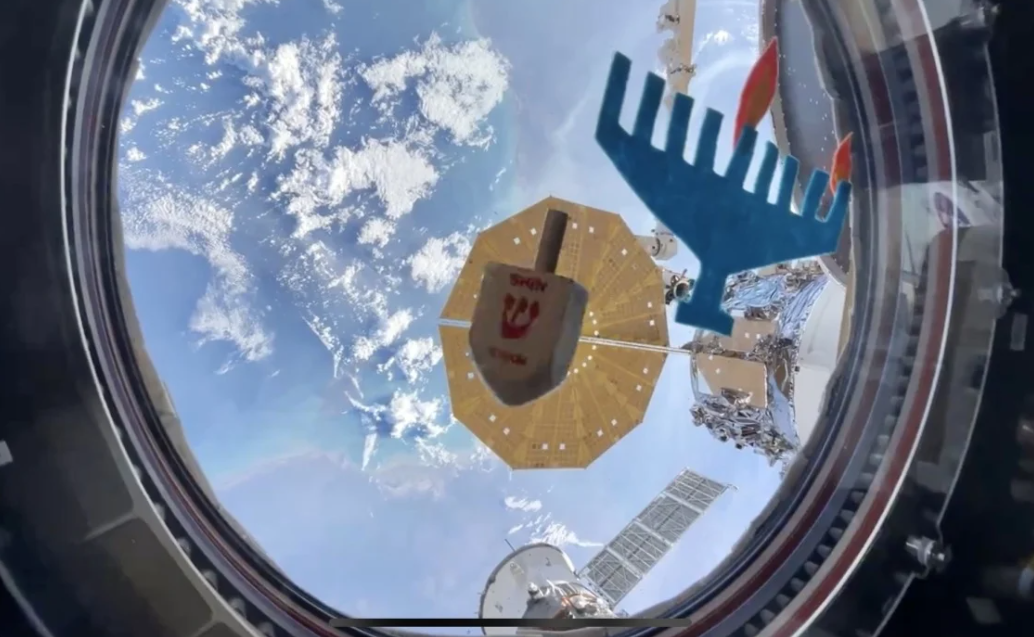NASA astronaut Jasmin Moghbeli, while on the International Space Station (ISS), not only celebrated Hanukkah, but also conducted an interesting physical experiment. At an altitude of 400 km above the Earth in zero gravity, against the background of a breathtaking view of the Earth from the porthole, she spun a dreidel. It is a four-sided spinning top, which is a traditional festive Jewish toy. The spinning of a dreidel is a traditional game during Hanukkah that is also combined with the main ceremony of lighting Hanukkah candles.

Interestingly, the spinning top even began to gain speed during rotation. It was stopped only by a blow to the camera lens, which even caused the commander of the SpaceX Crew-7 to laugh. The video of this interesting experiment can be viewed below.
Happy Hanukkah from the @Space_Station!! Real candles not allowed! pic.twitter.com/xdqwyot5ae
— Jasmin Moghbeli (@AstroJaws) December 7, 2023
Moghbeli, who usually celebrates Hanukkah and Christmas at home with her family, took a wooden dreidel, a felt menorah and a family photo with her into space.
This year, Hanukkah began on December 7 and would last until December 15. The main Jewish holiday is periodically celebrated in zero gravity. Jeffrey Hoffman, a NASA astronaut, was the first to celebrate Hanukkah in space in 1993 during the STS-61 mission to repair the Hubble Space Telescope.
After the third spacewalk, Hoffman celebrated Hanukkah with a menorah and a dreidel. In the video, he explains the peculiarities of the rotation of the Jewish spinning top, which are strikingly different from rotation in terrestrial conditions. The fact is that the physics of rotational movements on Earth has three components. Firstly, this is spin. Secondly, there is the effect of precession, which causes a change in the orientation of the axis. Finally, nutation is the vibrations of a rotating object.
The dreidel has an angular momentum associated with the distance from the center of rotation. On the Earth, it gradually slows down and stops due to friction with the air and the surface. When the spinning top slows down, it loses its angular momentum. Then gravity forces it down and stops the rotation completely. But in space, the rules are slightly different since there is no force pulling the spinning top down, and it can rotate much longer. If it were spun in outer space, where there would be no air resistance at all, it would spin for years.
Earlier we talked about the “space” special operations of the Mossad.
According to mashable.com
Follow us on Twitter to get the most interesting space news in time
https://twitter.com/ust_magazine


